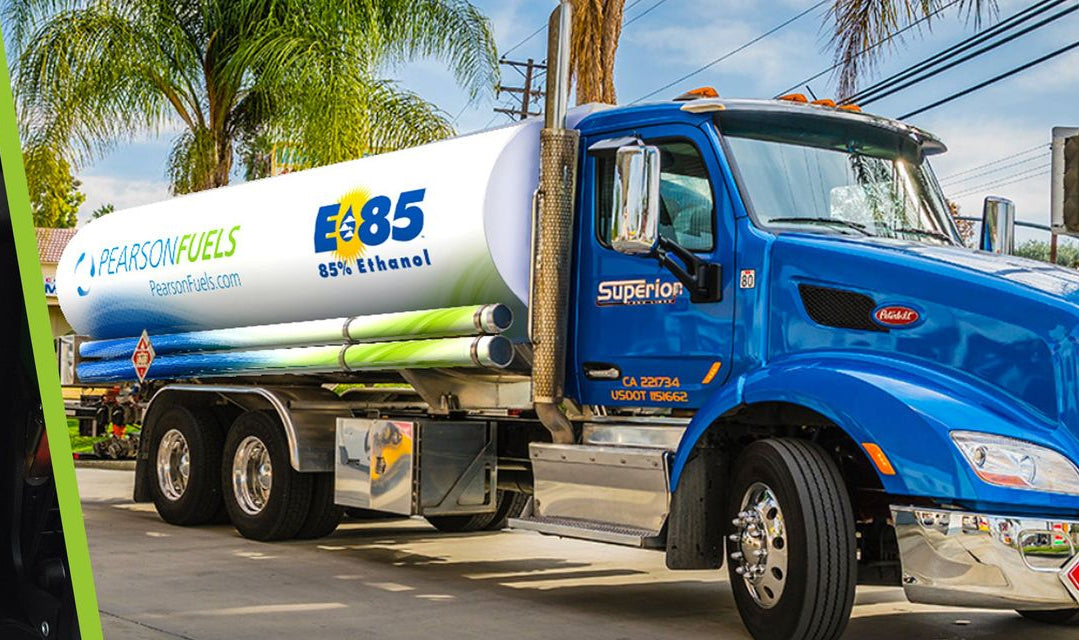E85 vs 93: Which Fuel is Right for Your Build?

E85 vs 93: Which Fuel is Right for Your Build?
Introduction: The Fuel Dilemma
If you’re serious about performance, at some point you’ve asked yourself: “Should I switch to E85, or stick with pump 93?” The answer isn’t as simple as octane numbers. Both fuels come with pros, cons, and costs that can make or break your build. Whether you’re chasing ETs at the strip, daily driving, or balancing both, understanding the difference between E85 and 93 is critical.
🔥 What is 93 Octane?
93 octane (premium pump gas) is the highest-octane fuel you’ll typically find at a standard gas station.
-
Pros:
-
Widely available in most regions.
-
Consistent and easy for daily driving.
-
Doesn’t require major fuel system upgrades.
-
-
Cons:
-
More prone to knock at higher boost/compression.
-
Limits power potential compared to E85.
-
Price per gallon can still be high.
-
👉 93 is reliable and safe for most builds, but it caps how far you can push power without risk.
🌽 What is E85?
E85 is a blend of 85% ethanol and 15% gasoline (though in colder states, it can be closer to E70 in the winter). Ethanol has a higher octane rating — usually equivalent to 100–105 octane.
-
Pros:
-
Knock resistance allows for more aggressive tuning.
-
Cooler combustion = reduced chance of detonation.
-
Often cheaper per gallon than 93.
-
Big horsepower potential when tuned correctly.
-
-
Cons:
-
Higher fuel consumption (20–30% more than 93).
-
Requires larger injectors, fuel pumps, and sometimes lines.
-
Not available everywhere — can be tough if you road trip.
-
Ethanol attracts moisture — long-term storage can cause issues.
-
👉 E85 unlocks serious power, but it demands supporting mods and access to stations.
⚖️ Performance Comparison: E85 vs 93
When it comes to raw performance, E85 has the edge.
-
Timing & Boost: On E85, tuners can run more ignition timing and higher boost without knock. That means more horsepower safely.
-
Cooling Effect: E85 burns cooler, which helps turbo/supercharged engines stay more stable.
-
Safe Power Ceiling: Builds on E85 often make 50–100+ more horsepower compared to the same setup on 93.
On the flip side, 93 is more predictable, especially for daily use. If you don’t have easy E85 access, 93 is more consistent.
💸 Cost Breakdown
-
Price at the pump: E85 is usually cheaper than 93. But…
-
Fuel consumption: Because E85 burns quicker, you’ll need more of it. That means more frequent fill-ups.
-
Upgrades needed: Injectors, pumps, flex-fuel kits — expect to drop anywhere from $800 to $2,500 depending on your setup.
👉 For long-term racers, E85’s power gains outweigh the costs. For casual builds, 93 might make more sense financially.
🛠 Supporting Mods: What You’ll Need for E85
Switching to E85 isn’t just “fill up and go.” Most builds require:
-
Bigger injectors (1000cc+ depending on goals).
-
High-flow fuel pump(s).
-
Flex-fuel sensor if you want to run both 93 and E85.
-
Custom tune to maximize ethanol’s benefits.
Without these, you’ll run lean or max out your stock system — which risks engine damage.
🚦 Daily Driving vs Track Use
-
Daily Driver: 93 is king for convenience. No stress about availability, less frequent fill-ups, and fewer headaches.
-
Weekend/Track Car: E85 dominates. If you’re chasing tenths, dyno sheets, or roll races, it’s the fuel of choice.
-
Flex-Fuel Setup: Best of both worlds. Run 93 when you need convenience, switch to E85 for race nights.
🏁 Conclusion: Which Fuel is Right for You?
-
If you want reliability, convenience, and simplicity → stick with 93 octane.
-
If you want max power, cooler temps, and a bigger performance ceiling → invest in E85 and supporting mods.
-
If you want both → build a flex-fuel setup and have the freedom to switch.
At the end of the day, the right choice depends on your goals: daily reliability or peak performance.
